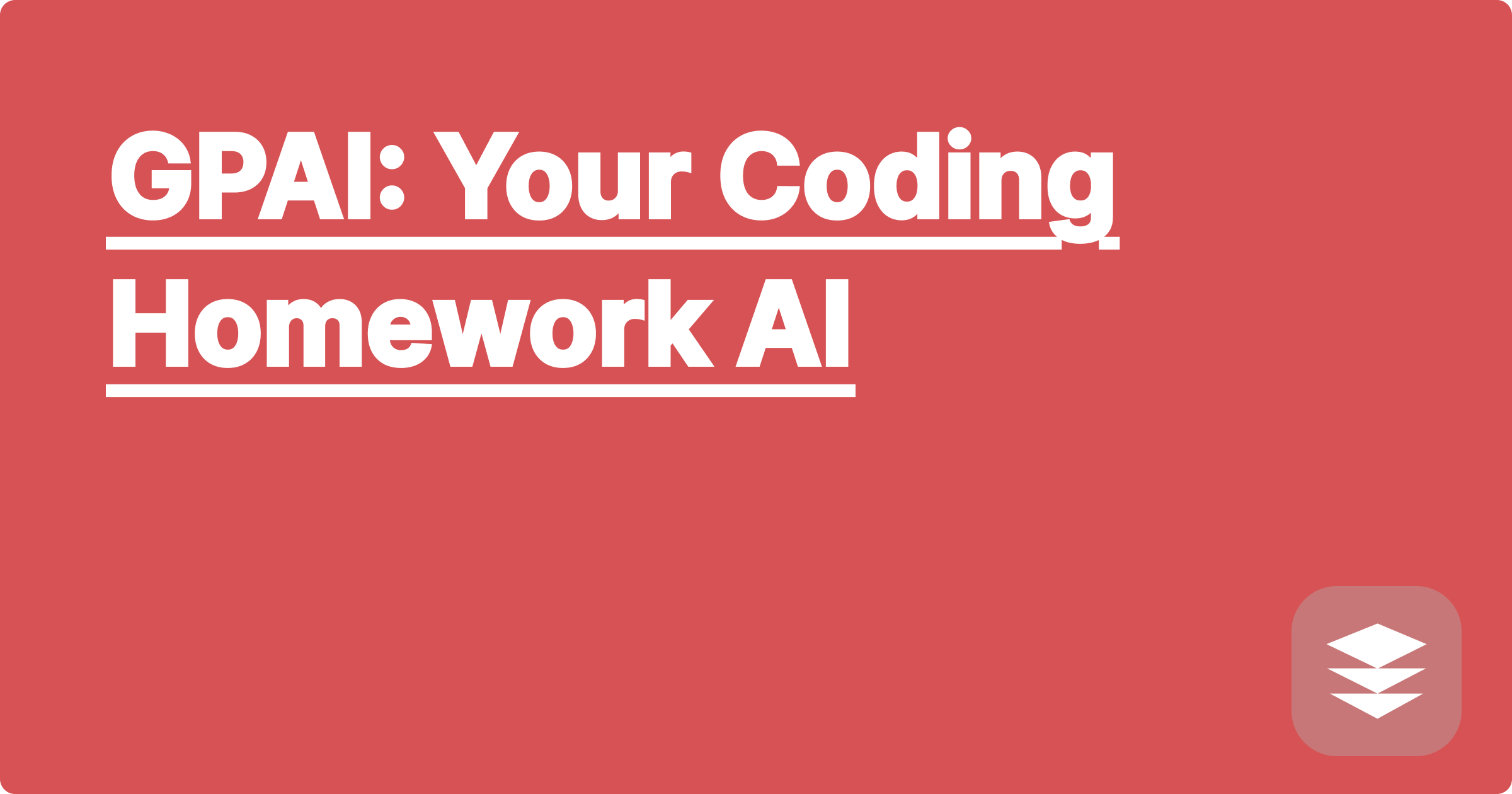
The demanding world of STEM education often leaves students feeling overwhelmed, particularly when it comes to coding assignments. Long nights spent debugging, the frustration of elusive errors, and the constant pressure to keep up with the curriculum can take a toll. But what if there was a way to transform this struggle into a more manageable, even enjoyable, learning experience? Artificial intelligence is rapidly changing the educational landscape, offering powerful tools to help STEM students, especially in computer science, navigate these challenges and achieve academic success.
This isn't just about making homework easier; it's about leveraging AI to deepen understanding, improve coding skills, and ultimately, prepare for a future increasingly driven by AI technologies. For computer science students grappling with complex programming assignments, AI can be a game-changer. This blog post explores how a hypothetical AI learning platform, GPAI (Generalized Programming AI), and other AI tools can become your coding homework allies, providing personalized support and boosting your learning efficiency.
Computer science students often face a steep learning curve, especially in introductory programming courses. The syntax of different programming languages, the logic of algorithms, and the debugging process can be daunting. Traditional learning methods, like lectures and textbooks, often fall short in providing the individualized support students need to master these concepts. Students may struggle to apply theoretical knowledge to practical coding problems, leading to frustration and a sense of being lost. Furthermore, the sheer volume of homework assignments can be overwhelming, leaving little time for deeper exploration and understanding. This gap between theoretical knowledge and practical application is where AI can step in to bridge the divide.
Imagine having a personalized coding tutor available 24/7. That's the promise of GPAI. This hypothetical platform utilizes AI to analyze your coding style, identify your weaknesses, and generate tailored learning plans. GPAI can provide instant feedback on your code, suggesting improvements and helping you understand the underlying principles. Beyond GPAI, other AI tools like ChatGPT, Claude, and Wolfram Alpha can be invaluable resources. ChatGPT and Claude can help explain complex concepts, generate code snippets for specific tasks, and even help you debug your code by identifying potential errors. Wolfram Alpha excels at mathematical computations and can assist with algorithm design and analysis.
Let's walk through a scenario where you're struggling with a recursive function assignment. First, you input your code into GPAI. The platform analyzes your code and identifies areas where you might be misunderstanding the concept of recursion. GPAI then generates a personalized learning plan, suggesting relevant tutorials and practice problems focused on recursion. As you work through these resources, GPAI provides real-time feedback, highlighting errors and suggesting improvements. If you're still stuck, you can use ChatGPT or Claude to ask specific questions about the concept or request code examples. For example, you could ask, "Explain how to implement a recursive function to calculate the factorial of a number." These tools can provide clear explanations and working code examples, helping you grasp the concept and apply it to your assignment.
Consider a scenario where you need to implement a sorting algorithm. You can use ChatGPT to generate code for different sorting algorithms, like quicksort or mergesort, in your desired programming language. You can then use GPAI to analyze the generated code and understand its time complexity. For instance, you can input the quicksort code into GPAI and ask, "What is the average-case time complexity of this algorithm?" GPAI will provide the answer along with an explanation. Furthermore, Wolfram Alpha can be used to visualize the sorting process and compare the performance of different algorithms. This combination of AI tools allows you to learn the theory, see the practical implementation, and analyze the performance characteristics of different algorithms, all within a single workflow.
Integrating AI tools into your workflow requires a strategic approach. Don't just rely on AI to generate code without understanding the underlying principles. Instead, use these tools to supplement your learning, clarify concepts, and accelerate your coding process. Actively engage with the explanations and examples provided by the AI tools. Experiment with different approaches and test your understanding by modifying the generated code and observing the results. Don't be afraid to ask clarifying questions and seek further explanations. By combining the power of AI with your own critical thinking and problem-solving skills, you can maximize your learning potential.
Finally, remember that AI tools are meant to enhance, not replace, your learning process. Use them responsibly and ethically, always striving to understand the concepts behind the code. By embracing these tools and integrating them into your study routine, you can transform your coding homework from a dreaded chore into an engaging and rewarding learning experience. Start exploring these AI-powered resources today and unlock your full potential as a computer scientist. The future of learning is here, and it's powered by AI.